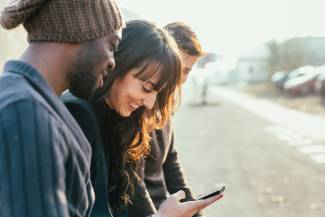Enrich your Customer Experience with the Best Content Marketing Strategy
We’ve probably all heard the popular mantra “Content is King” and felt it sounded like one of those clichéd expressions straight out of Marketing speak that make you go “OK. OK. We know, then what?” (**rolls eyes**) But in terms of its application to modern (increasingly digitized) marketing, it’s really not far from the truth. Your customers want valuable, helpful content from your business that can help them, in a way that isn’t intrusive.
It doesn’t stop there, because just valuable content doesn’t quite tell the full story. It also has to be relevant, tailored to the target’s needs, else it’s disconnected and fails to engage them. While running a business in the experience-based industry (hospitality, entertainment, etc.) might seem like the easiest thing since spending your parent’s money, (**giggles in childhood nostalgia**) It’s not.
There’s one teeny-tiny problem in this sector—it’s as many times as difficult to gain new customers as it is to retain existing ones. This means, more often than not, the survival of a business depends on how well it can turn one-time patronage into long-term brand loyalty.
Enter content marketing. Whether customers choose to keep coming back or pivot to a competitor is down to one thing—your customer experience. Spend as much as you would on branding, ads and whatnot all you want, and it all won’t matter if they don’t leave your customers beaming with delight from your content.
Hence, you need to finetune your content marketing strategy to supercharge customer experience. If the thought of ever navigating the territory of content marketing feels like your gut is filled with bricks and no amount of ‘web digging’ will give you the secret sauce, this post was specially made with you, top-of-mind.
We’ve stepped into the shoes of business owners in these industries to answer their content marketing-based curiosities; the best content marketing strategies, tools, content marketing examples, and how you can apply them for business success.

The best content marketing tips for a quality customer experience
The CMI (Content Marketing Institute) defines content marketing as “a marketing technique of creating and distributing valuable, relevant and consistent content to attract and acquire a clearly defined audience—with the objective of driving profitable customer action”.
Content marketing has become a vital part of the marketing thrusts of companies worldwide, with everyone using media content to attract, entertain and maintain an audience, with the ultimate goal of converting buzz to patronage.
Countless brands from GE, Lyft to Hermes routinely utilize combinations of various content marketing tools to drive traffic to their stores and websites. However, perhaps the cleverest of all is the Marriott brand’s use of a 35-minute travel-related movie to subtly introduce viewers to its services as a leading brand in the hospitality business.
However, content marketing is not as easy as it may be made out to be. A lot of brands struggle to come up with original ideas, and then most of the time just end up duplicating content. Also, to win at content marketing, brands need to approach with a workable strategy. When they fail to do so, they might find the entire campaign failing as well. Building a workable strategy involves many things, including knowing what tools to use, and what kinds of content guarantee the best reception.
There are infinite content marketing tools out there that you can use to generate buzz around your business. Here, we list four (4) content types that are sure to get the job done.
Infographics
In a world where people struggle with information overload, infographics are a welcome sight. With much fewer words than a 280-character tweet, infographics are a unique way to tell stories by simply using visualized data. Besides, even folks who want to use words find themselves having to prove their points using hard data ergo infographics.
With just a few bucks, you can have someone design one or multiple charts relevant to your industry, watermark and then post them on your website or social media. There’s no telling how many times the infographic (with your watermark placed conspicuously) will be shared.
Newsletters
Another proven top marketing tool is newsletters. The people who will be receiving the newsletters already took a step, indicating at least minimum interest. With the right strategy, you can harness these relationships to convert them to paying customers, more easily than you can convert other random people.
Blogs
Similar to running a newsletter is running a blog. More than anything, people need sources to refer to for information, tips and such. Running a blog that regularly provides answers to questions that people might have about your industry will raise your business’ profile, helping you to build an audience of prospective customers.
Content calendars
As we have mentioned earlier, one recurring problem with content marketing is the often absence of a cohesive strategy, or feedback about which content is the most engaging. Using a content marketing calendar like Apsis One’s helps you to keep track of all of your content marketing options, enabling you to form winning strategies, using your most productive options.

Touchpoints in Your Content Marketing
We all know how much traffic can be generated by using any of the modern strategies used by star-studded marketing departments these days. But, do you know what’s even better than a perfectly crafted ad aired at halftime at the Superbowl? Word of mouth, or as it is known in professional lingo – customer advocacy.
Customer advocacy is the last step on the trajectory of customer experience. Beginning from the first contact that a person makes with your business, the right marketing practices will ensure that they go all the way to become customer advocates. There are 5 points on this trajectory; below, we consider them individually.
— Awareness
This is the very first point of contact between any business and customers. There are quite a few ways for prospective customers to become aware of your brand.
For example, if you run a travel agency, a prospective customer may become aware of your brand through a traditional ad on TV or in the newspaper. They could as well find directions to your website while surfing the internet for options when they finally decide to take that well-deserved week-long vacation in Bali that they’ve looked forward to for the better part of the year.
Either way, one thing is consistent – brand awareness campaigns are still as important as ever, as the first step in the customer experience trajectory. To take care of this level, your marketing strategy must include SEO optimization, to ensure that your business is brought up when prospective customers google-search related keywords; and advertisement campaigns that include runtime in both traditional and social media.
— Consideration
After awareness, comes the consideration stage. A potential client whose interest has been piqued by your awareness campaign may proceed to want to know further. This is the consideration stage, where they weigh their options and what they may gain or lose from pitching their tent with you.
This often involves either phone calls to your customer service department or visits to your website. At both ends, you have to be primed to capture their business.
The customer service workers handling the phones must be properly trained on handling first-time callers. They must be able to provide succinct product/service descriptions, answer any questions and give insight if requested by the caller. On the other hand, for prospective customers visiting your website, you should have explainer videos, FAQ sections, detailed catalogues, and blog posts to help them fully understand how your business is their best choice.
— Conversion
Then comes conversion, the focal point of the entire customer experience trajectory. It is at this point that a prospective customer becomes a paying customer when they finally purchase some of your products or services.
It may or may not happen immediately, as some customers may need some time to reach a decision. Considering the comparison that we made earlier comparing Google SEO and traditional ads; the customer who finds your business after a Google search may patronize immediately cause it’s a pressing need, while the other customer may hold on for a little bit till they can take a vacation and require your services.
Regardless, this step boils down to one thing, the ability of your business to build trust with them. In the case of the person who visits your website, one excellent strategy to use here is to send them newsletters every other week (with content seemingly focused on educating them on facts about the industry, rather than getting them to make a purchase). There’s hardly a better way to build their trust in your brand than by showing up in their email inbox with helpful content at intervals.
— Loyalty
This here is the all-important step of converting a one-time purchase into brand loyalty. This phenomenon can be observed everywhere; from food production to apparel, consumer technology companies, the list goes on.
It is not uncommon these days to find people proudly brandishing their Mac, iPhone, Airpods, and iWatch as proof of their loyalty to the tech company. By harnessing brand identity to build customer loyalty in this fashion, companies like Apple thrive and earn multiple billions in revenue annually.
In the entertainment and hospitality industries too, there are numerous examples. Top brands, like the Marriott hotel chains, build brand loyalty by offering loyalty/membership programs with quite a few perks. This way, the only time a cardholder wouldn’t stay in a Marriott hotel while travelling, is if there is none near them.
— Advocacy
Then, the final step in the customer experience trajectory; is the stage where, after a customer has established loyalty with youth business, they become an active promoter. What is better than high-return peer-to-peer advocacy? Well, high-return peer-to-peer advocacy costs next to nothing. You do not have to pay for air time or pay an ad agency to get this running. All you have to do is leave the customers satisfied enough to want their relations and acquaintances to share the experience.
This is usually achieved by fostering a post-sale relationship with clients. The most common way that this is done is by utilizing email marketing tools to send personalised birthday messages, newsletters, guides etcetera. A steady stream of such emails will, in no time, foster an emotional connection; making them volunteer advocates for your brand.
Conclusion
Content marketing is one of the best ways to drive engagement for your business. For minimal costs, you can degenerate insane amounts of attention, and convert the same into sales. However, in the absence of a well-thought-out strategy, it is just as easy to lose your way.
Well, with Apsis One’s marketing automation and email marketing tools, we provide an avenue for you to masterfully maintain control over content marketing thrusts, optimizing for maximum turnover. Want to see how it works? Book a personalised demo!


